Guide - How to power your guitar effects and pedal board

This is a lengthy guide I keep coming back to update as the topic gets covered a lot in online forums, I do get asked a lot of questions about powering guitar effects. Mind you it is pretty important, to get it right all these different modular components trying to work together in unison.
First, there are several ways to power your guitar effects and the method you use can make a difference to your whole experience of playing electric guitar.
Making sure you have the right power supply will ensure your pedals come on, prevent them from getting damaged, or becoming noisy. All of your guitar pedals, cables, chosen power source and methods you have used to connect them all; all form components of a circuit, that need to be powered right to work right.
Faulty components & environmental aspects all come into it too. When it gets discussed on an online guitar forum it is like unleashing the worst of everyone in the whole guitar community.
I'm happy to answer questions though :) In-person this topic has been discussed with philosophical debate, deep understanding, but mostly some basic electronics.
Sorry you are all wrong Isolated power is not the best, I do not believe it. There I said it.
The internet is full of useful information and advice but can be applied to the wrong problem.
Batteries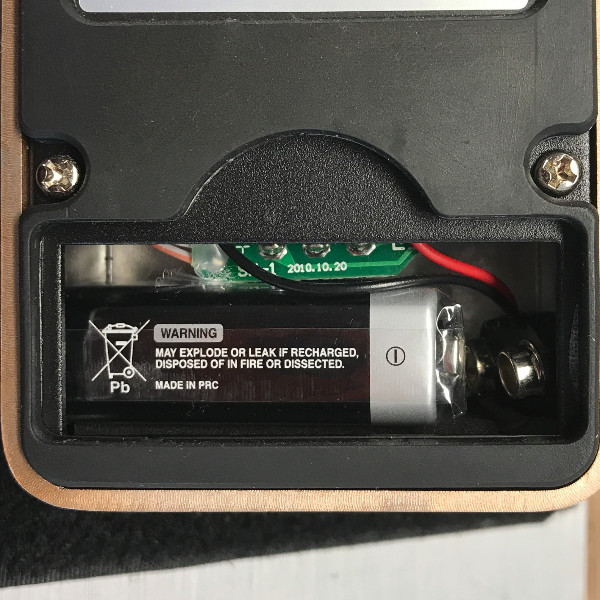
The 1st series, 2nd series of JOYO pedals and DrJ pedals all can be powered with a 9v battery, but this is not the best option to power aboard. Not enough juice!
Your pedal board will only sound as good as your cheapest part! So let's try and increase that from a long life low powered battery from the garage.
Batteries have a limited lifetime and different guitar pedals draw more current than others. If it zaps your tongue when you lick it, it might have a bit of power, but that is not a good test to be fair.
The more you use a pedal, the more power it will soak up, you can’t be left guessing when that battery will fail, what power it is using.
That power to your board is essential if you want to maintain the flow of your guitar signal. Pedals are made of electronics, the power you use ensures that they stay on when you need them.
The cons, a power supply would consistently put the correct voltage through your pedal at all times. As long as there is a supply of power coming through the plug, pedals will work !.
No matter what equipment you use, we make sure that you have enough of that magic power to do the job, making sure that the current flows steadily, in a regulated manner and does not interfere with your audio signal.
I do not like batteries, they are old technology and JOYO has made some better solutions for these old problems.
read on............
Mains Power Supply.
The first thing you should do before purchasing the mains powered guitar effect pedal power supply is to check the voltage requirements of your equipment or pedals.
All JOYO effect pedals use power supplies that are 9v DC. When it comes to powering anything you must also take note of Milliamps, Polarity and how wide the connector is.
This information is found on your pedal or manual.
AC or DC power supply
All JOYO pedals and a vast majority of other manufacturer pedals including JOYO, Boss, TC, EHX use a 9v DC centre negative power supply.
DC stands for direct current. Pedals requiring AC (alternating current) are few and far between and usually come with a dedicated power supply, and it is recommended that you use only this power supply with that pedal.
For the record, JOYO guitar effect pedals use a Direct Current.
What is Polarity?
That funny sign on the bottom of your pedal is there for a reason.
JOYO Guitar effects use DC voltage and DC voltage has a polarity. It simply indicates which bit of the tip of the power supply has a positive voltage and which has a negative. Get this bit wrong and you will damage your pedal.
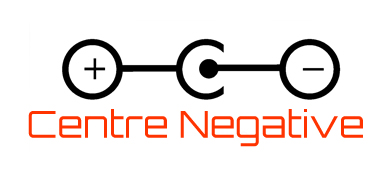
With a barrel-type power plug jack, this is usually specified as being centre-positive or centre-negative. A centre-negative plug will have the negative voltage on the centre conductor (the hole) and the positive voltage on the sleeve (outside) conductor.
Guitar effects by JOYO and many many others are 9v centre negative. JOYO pedals us a 9v centre negative power supply.
If you reverse the polarity or get this wrong, a few things can happen. If you are unlucky, your device will be damaged.
There’s a middle ground, too. Some guitar effects include polarity protection, which is essentially a fuse that burns out if you use the wrong polarity. Don't rely on it, most of the time it will blow your pedal.
If you power your pedal incorrectly, you might have heard a pop, see a puff of smoke as your money and warranty go out of the window.
Blow the pedal like this and it will also probably emit a slightly metallic smell where it has blown up inside. That is right, I admit it I am a pedal sniffer.
So if you ever see a guitar tech smelling a jack input, that is why. They are a Pedal sniffer too.
Jack-Jack Jack to your pedal.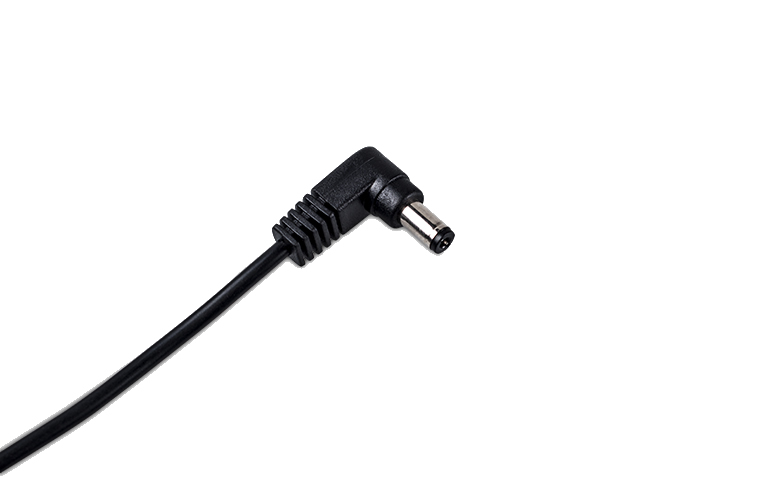
The Jack is the bit that you put in your pedal, so it has to be the right size. You will find most jack tips for guitar effect pedals have a jack tip that is 5.5mm across. This is pretty standard given the components used in pedals. The size will ensure that the inner conductor and the sleeve will fit the pedal in a snug fit. Do not force one, if it doesn’t fit, it won't stretch! JOYO pedals require a 5.5mm sized jack tip.
Milliamps.
Current is measured in amps (A). A milliamp, or mA, is one-thousandth of an amp. The current rating on your power supply is the maximum it can supply. For example, if your power supply reads 100 mA, then it can supply a pedal of 80 mA of current. Less is okay, but not more.
So if you plug in a 100ma 9vdc centre negative supply with a 5.5mm tip into a pedal that needs 200ma, it will kill it. GAME OVER.
Use a power supply of 800ma on a 9vdc centre negative supply with a 5.5mm tip into a pedal that needs 200ma, using my calculator, you have 600ma left over, so that’s more than enough. You are sorted!
Use a power supply of 800ma on a 9vdc centre negative supply with a 5.5mm tip into 4 pedals that need 200ma, using my calculator, you can safely power them using a daisy chain.
Don’t get this wrong.
Daisy Chain
So say you have been building up your collection and now have 5 pedals, do you need 5 power supplies?
Well yes, but add up the total mA of those pedals.
Don’t ever plug an adapter with the wrong voltage into a pedal otherwise, you’ll just end up with an expensive paperweight. You will not only blow your pedal but also your warranty.
If you just read that bit on Milliamps, you might have a power supply with a current mA rating greater than the current rating of the pedal connected. If you are powering multiple pedals from a single power supply (daisy-chaining), then add up all the current mA ratings of your pedals. Do not exceed the power supply total mA
Do not try and power your pedals with flowers, this will not work.
What is a Filtered or Isolated Power Supply
There is a difference and often is confused about what might be needed. JOYO has both types.
A typical power supply can be best understood by dividing the circuit into two key components we use. The first is a reservoir capacitor and the second is a low pass filter. Each of these parts contributes to removing the remaining AC pulses but in slightly different ways.
The most popular power supply by JOYO is the multi powered JP-02, it is fitted with a reservoir capacitor (input) and individual low pass filters on each ac output. Each output is isolated from the other, there are 10 independent filters. The number of filters reduces noise on the output and prevents interference between the pedals.
Noise can often occur when mixing analogue and digital pedals on the same circuit, the individual isolated filters also have circuit protection, which prevents the entire circuit from being overloaded. Should the power supply be overloaded then a safety mode kicks in.
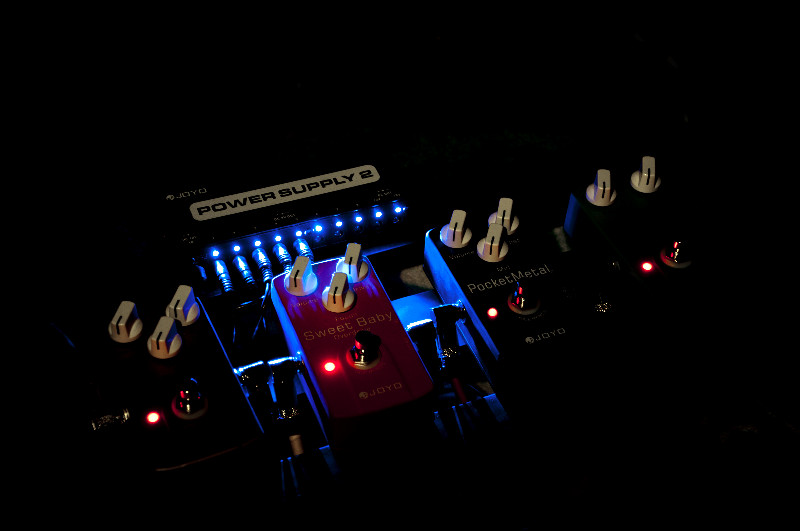
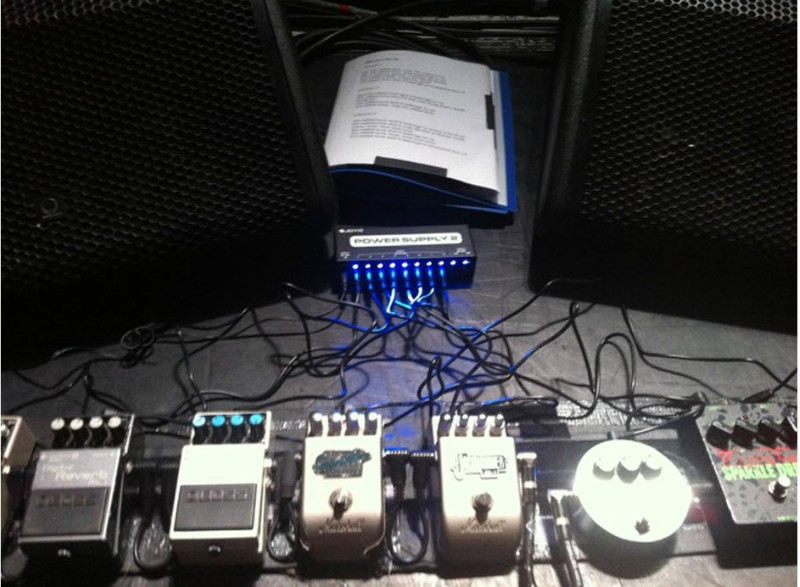
The JOYO JP-02 multi-power supply for pedals was tried and tested by Mancunian guitar legends Peter Hook (JOY Division / New Order), Dave Potts (Monaco), Jack Bates & Phil Murphy in the famous music venue the Ritz.
During sound, check noise was apparent when pedals were powered and connected.
Whilst the noise emitted from the PA was contributed to by the wiring of this 100-year-old venue, suffering from AC ripple. A mixture of analogue and digital pedals was most likely the issue running off a very long extension cable.
The JP-02 ensured that the fluctuating AC current was dampened (capacitor) and any noise eliminated from individual pedals regulated using filters, ensuring a noise-free gig much Kudos to the JOYO team! Forever grateful for that opportunity & support from everyone at 'Peter Hook and the Light'.
The JP-03 power supply is a 9v dc, suitable for daisy and powering individual pedals, it has a large reservoir capacitor to reduce any AC ripple and a larger filter fitted into the, eliminating noise interference from the mains.
The Jf-18 Power Tune is a chromatic pedal tuner & power supply. It is powered by the JP-03 and has filters on each dc output. It combines the technology achieved with the JP-02 and ensures minimum AC ripple using the large filters of the JP-03
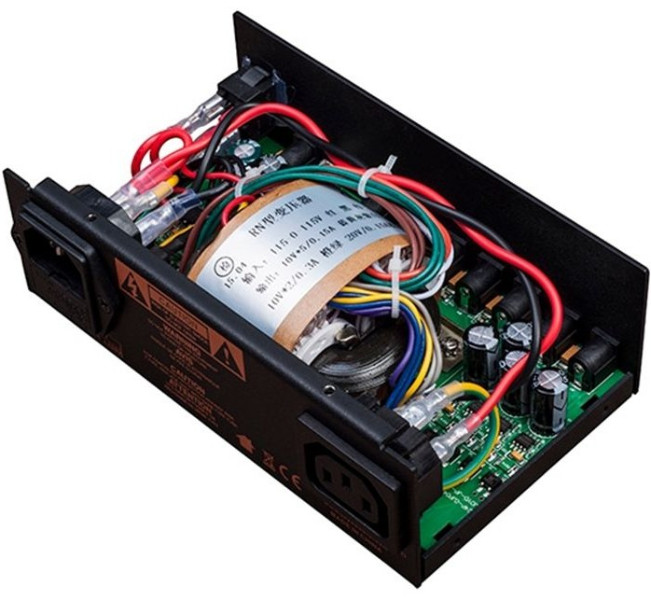
The JP-04 is a fully isolated power supply. Isolated power supplies provide a clear barrier across which dangerous voltages won’t pass. Where mains supply is largely unpredictable if extension cables are used. This first provides safety with equipment. The disadvantage is the power supply size is bigger than a non-isolated power supply due to the transformer that is needed for isolation. When a power supply is listed as isolated, it is normally referring to input to output isolation. This isolation is typically achieved by the use of a transformer. The input is isolated from the output, ensuring that there is no fluctuating AC ripple.
The JOYO JP-05 is a bit of a hybrid. Powered by mains, or the built-in Lithium battery. If you feel the need to have an isolated power supply, unplug it. It is fully isolated.
Isolated Outputs
When a multi-output power supply has isolation between the outputs, it means there is an electronic barrier between outputs and they are not tied to a common ground.
The n
Each output of the power supply features independent filters, output overload & short-circuit protection protecting of your pedals and filtering out any unwanted noises.
When the JP-05 power supply is charged and used as a portable power supply, the unit becomes isolated from the mains supply and will therefore not suffer from any mains hum.
The JOYO JF-18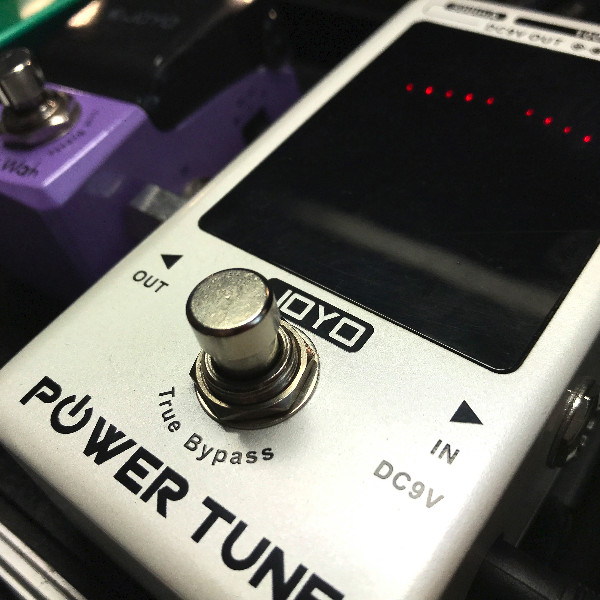
The Power Tune is powered by a single power supply (JP03) and can power up to 14 JOYO pedals that run at 100ma. It is our power supply of choice with our JOYO demo pedalboards, saving space, money & filters out unwanted noises.
So should I use a filtered or Isolated power supply then?.
So the answer depends on different things, your budget, your pedals, the wiring of the building and where you are playing. If your pedals are all digital, you could use a JP-03 filtered daisy supply with no problem. If you mix digital pedals with analogue, definitely bring out the isolated filters of the JP-02.
If you have older pedals, use a mixture of analogue & digital and want to be 100% noise-free Isolation is what you need.
So whilst Isolation is perhaps the most common answer you will get from a keyboard warrior on a guitar forum to the question of what power supply should you use, it is not necessarily what you will need in a bedroom of a 1950s semi-detached house, or even in a 100-year-old music venue in the middle of Manchester.
Check out the JOYO guitar effect pedal power supplies, cables & accessories here.
If you need any assistance or have any questions let us know!
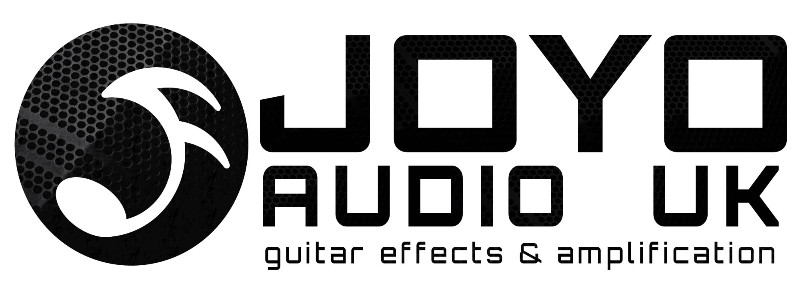

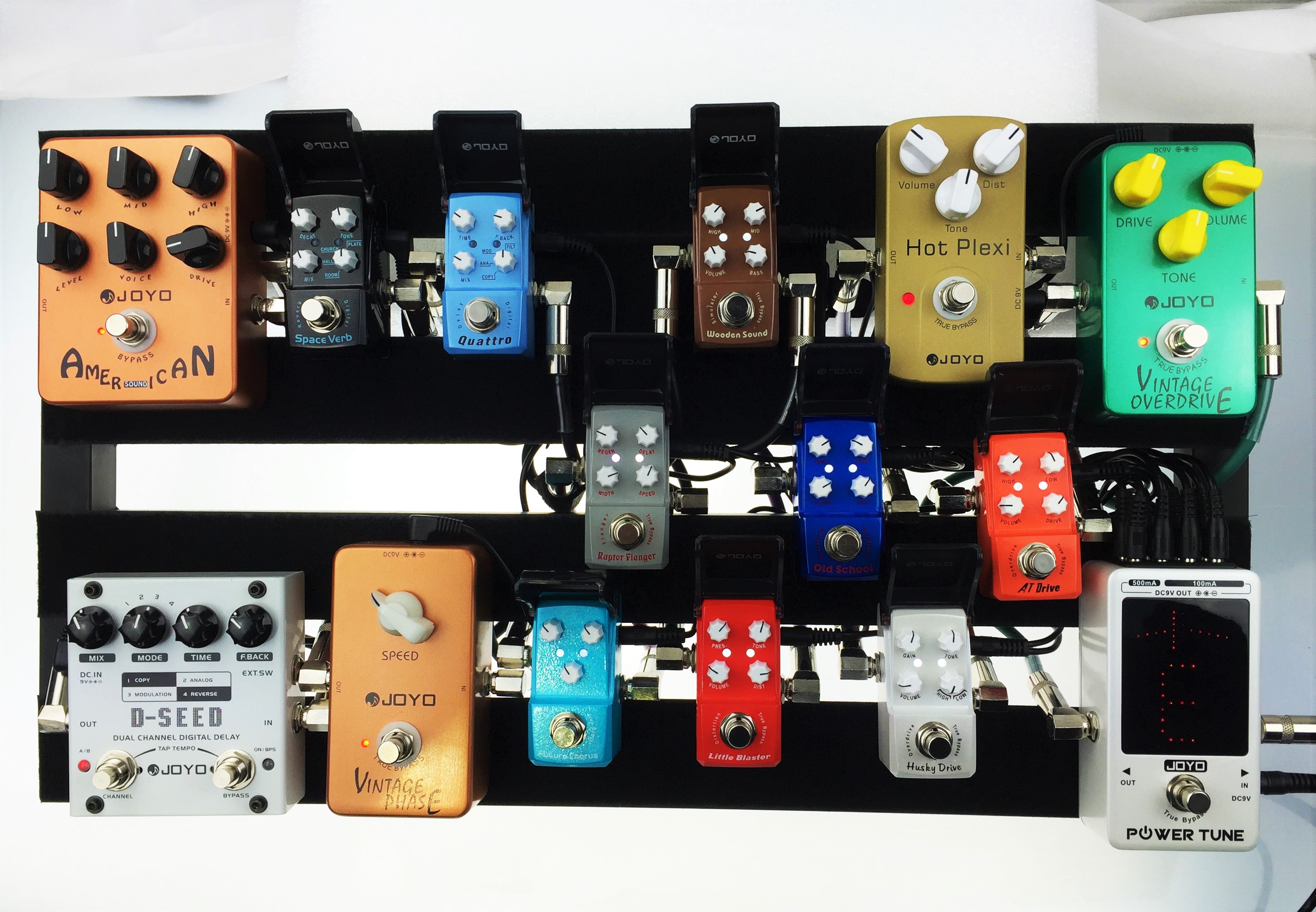
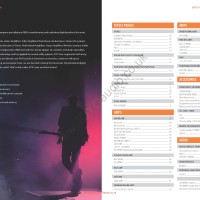
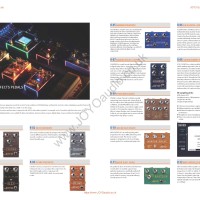
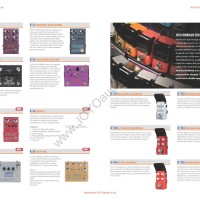
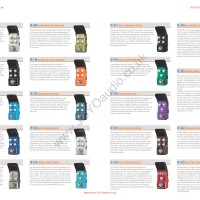
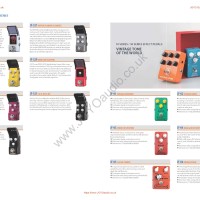
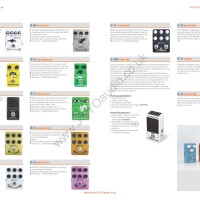
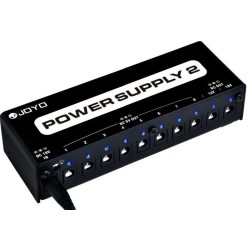
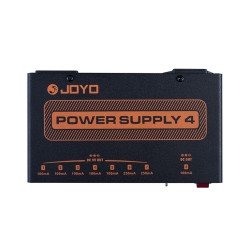
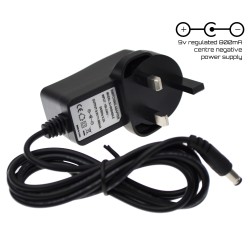
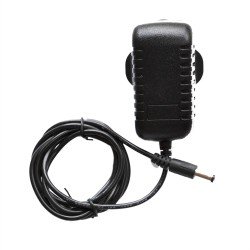
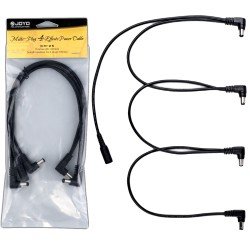
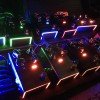
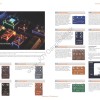

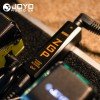
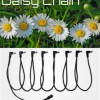

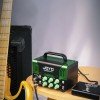
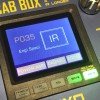
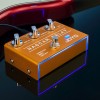

Leave a Comment